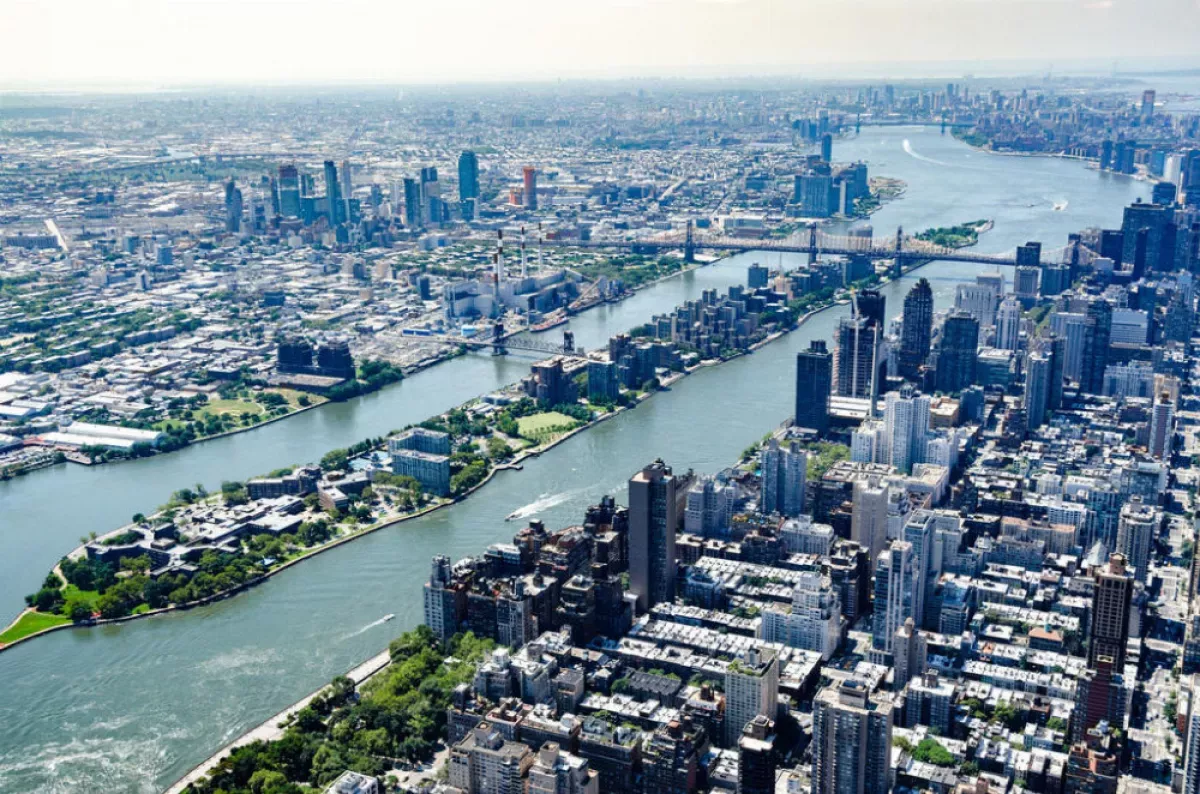Roosevelt Island is a 2-mile-long island in New York City's East River, part of Manhattan, located between Manhattan and Queens. As of 2020, it has a population of 11,722 and consists of two residential communities, Northtown and Southtown. Owned by the city, it was leased to the New York State Urban Development Corporation (UDC) in 1969 for 99 years.
1901: Navy Proposal for Drill Ground
In 1901, the United States Department of the Navy proposed a drill ground and training facility at Blackwell's Island's northern end, although city officials opposed it.
1902: Tuberculosis Ward Opened
In 1902, a tuberculosis ward at Metropolitan Hospital opened on Blackwell's Island.
1907: Park Proposal Resurfaced
In 1907, a proposal to convert Blackwell's Island into a park resurfaced. Also, the Russell Sage Foundation set up a short-lived pathology institute on the island.
1909: Trolley Operations Began
In 1909, a trolley started operating from the Queensboro Bridge, connecting passengers from Queens and Manhattan to Roosevelt Island. Passengers transferred to an elevator to reach the island.
1909: Queensboro Bridge Opened
In 1909, the Queensboro Bridge, crossing Blackwell's Island, opened, but it did not provide direct access to the island until the late 1910s.
1909: Chapel of Our Lady, Consoler of the Afflicted Date
The Chapel of Our Lady, Consoler of the Afflicted dated to 1909 and was a Gothic-style stone building serving the island's Catholic community.
1914: Report Criticizing Penitentiary
In 1914, the city's deputy correction correctioner called Blackwell's Island's penitentiary "unfit for pigs" in a report criticizing the unsanitary and overcrowded conditions.
1915: Prison Hospital Planned
In 1915, city corrections commissioner Katharine Davis announced plans to construct a prison hospital on Blackwell's Island.
1917: Church of the Good Samaritan Developed
In 1917, the Church of the Good Samaritan was developed for the Lutheran community on Roosevelt Island.
1918: Refurbishment Ordered
In 1918, Bird S. Coler ordered that Blackwell's Island's buildings be refurbished after he became the city's public welfare commissioner.
1918: Elevator Building Finished
In 1918, an elevator building on the north side of the Queensboro Bridge was completed. It provided access to Roosevelt Island.
1919: Elevator Building Finished
In 1919, an elevator building on the north side of the Queensboro Bridge was completed. It provided access to Roosevelt Island.
1921: Renamed Welfare Island
In 1921, Blackwell's Island was renamed Welfare Island.
1921: Blackwell's Island Renamed Welfare Island
In April 1921, the New York City Board of Aldermen renamed Blackwell's Island to Welfare Island in hopes of improving the island's reputation.
1924: Conversion to Park Recommended
In 1924, the state's prison commission recommended converting Welfare Island to a park, and the city began planning to move Welfare Island's inmates to a new jail complex on Rikers Island.
1925: Chapel Dedicated
A chapel was dedicated on Welfare Island in 1925.
1925: Chapel of the Holy Spirit Consecrated
The Chapel of the Holy Spirit, an Episcopal chapel at the Metropolitan Hospital, was consecrated in 1925.
1926: Synagogue Dedicated
A synagogue was dedicated on Welfare Island in 1926.
1926: Council Synagogue Opened
In 1926, the Council Synagogue opened on Welfare Island, featuring a "pleasing exterior" and a "simple, dignified interior".
1933: Island Rezoned
In 1933, the Board of Estimate rezoned Welfare Island to allow redevelopment. At the time, officials were planning a children's hospital and nurses' dormitory on the island.
1934: Prison Reformed
In 1934, municipal prison commissioner Austin MacCormick reformed Welfare Island's prison following a series of uprisings.
1935: Chapel of St. Dennis built near the Octagon
Around 1935, a stone structure, Chapel of St. Dennis, was built near the Octagon on Roosevelt Island.
1935: Ferry Service Started
In 1935, a ferry service began running from Welfare Island to Manhattan.
February 1936: Inmates Relocated
By February 1936, workers demolished the Welfare Island jail, and all inmates had been relocated after the Rikers Island jail complex opened.
July 1939: Welfare Island Hospital Opens
In July 1939, the Welfare Island Hospital for Chronic Diseases, later Goldwater Memorial Hospital, opened, and the Central and Neurological Hospital closed.
1940: Chapel of St. Dennis built near the Octagon
Around 1940, a stone structure, Chapel of St. Dennis, was built near the Octagon on Roosevelt Island.
1945: Girls' Shelter Opened
In late 1945, a girls' shelter on Welfare Island opened.
1948: Construction Began on Laundry Building and Coler Hospital
In 1948, construction began on a laundry building and a 2,000-bed facility, later known as the Bird S. Coler Hospital, on Welfare Island.
1952: Coler Hospital Opened
In 1952, Coler Hospital opened on Welfare Island, and patients were relocated there from the City Home for Dependents.
1953: City Home Emptied
City Home was emptied out by 1953.
May 1955: Welfare Island Bridge Opened
In May 1955, the Welfare Island Bridge opened, and a bus began serving the island.
1955: Roosevelt Island Bridge Opened
In 1955, the Roosevelt Island Bridge, a vertical-lift bridge connecting to Astoria, Queens, opened. It is the only vehicular route to the island.
June 1956: Ferry service end
In June 1956, the ferry service running from Welfare Island to Manhattan was discontinued.
April 7, 1957: Trolley Operations Ceased
On April 7, 1957, the trolley service connecting Queens and Manhattan to Roosevelt Island via the Queensboro Bridge ceased operations.
1957: City Hospital Replaced
In 1957, the City Hospital on Welfare Island was replaced by Elmhurst Hospital Center in Queens.
1957: City Government Attempted to Demolish Abandoned Buildings
Since 1957, the city government had been trying, without success, to obtain $1 million to demolish the abandoned buildings on Welfare Island.
1958: Medical Facility Opened
Another medical facility for chronically ill and elderly patients opened on Welfare Island in 1958.
1958: Chapel of the Good Shepherd Ceased Operations
In 1958, the Chapel of the Good Shepherd, Roosevelt Island's first church, ceased operating as an Episcopal church.
1960: Half of Welfare Island Abandoned
By 1960, half of Welfare Island was abandoned, and the Goldwater and Bird S. Coler hospitals were the only remaining institutions there.
1961: Richmond Announced Proposal to Re-develop the Island
In 1961, the businessman and politician Frederick W. Richmond announced a proposal to redevelop Welfare Island with residences for 70,000 people.
1962: Fire Department Training School Opened
In 1962, the New York City Fire Department (FDNY) opened a training school on Welfare Island, using 90 abandoned buildings for training purposes.
February 1965: Announcement of New York City Subway station on Welfare Island
In February 1965, a New York City Subway station on Welfare Island was announced as part of the new 63rd Street lines under the East River, spurring additional plans for the island's redevelopment.
1965: 63rd Street Line Proposed
In 1965, the New York City Subway's 63rd Street Line was proposed, with a station directly serving Roosevelt Island.
1965: Demolition of dilapidated buildings
In 1965, the city government ordered the demolition of six dilapidated buildings on Roosevelt Island.
June 1966: City takes over abandoned hospital buildings
In June 1966, the city took over another 45 abandoned hospital buildings via condemnation.
December 1967: State government proposes public park
In December 1967, the New York state government proposed converting most of Roosevelt Island into a public park, with senior citizens' housing at the north end.
1967: Delacorte Fountain Donated
In mid-1967, publisher George T. Delacorte Jr. donated the Delacorte Fountain, to be placed at the southern tip of Roosevelt Island.
1967: Welfare Island Described as a "ghost town"
One reporter in 1967 called Welfare Island a "ghost town, vacant lot, woodland and mausoleum for unhappy memories".
February 1968: Mayor Lindsay names committee for development
In February 1968, mayor John V. Lindsay named a committee to make recommendations for Roosevelt Island's development.
October 1969: Formal proposal for Welfare Island
In October 1969, the city and state governments formally presented their proposal for Welfare Island.
1969: 1969 plan for fire and police stations
Although the 1969 plan for Roosevelt Island called for dedicated fire and police stations, the island receives all of its emergency services from Queens.
1969: Master Plan Designed
In 1969, Roosevelt Island's street layout was based on a master plan designed by the architects Philip Johnson and John Burgee.
1969: Lease to New York State Urban Development Corporation
In 1969, Roosevelt Island, owned by the city of New York, was leased to the New York State Urban Development Corporation (UDC) for 99 years.
1969: Delacorte Fountain Dedicated
In 1969, the Delacorte Fountain was dedicated at the southern tip of Roosevelt Island. The fountain sprayed water from the East River 400 to 600 feet into the air.
1969: Master plan divided the island
In 1969, the master plan divided Roosevelt Island into two residential communities: Northtown and Southtown.
1970: Elevator Building Demolished
In 1970, the elevator building on the Queensboro Bridge, which provided access to Roosevelt Island, was demolished.
1970: Yarmolinsky hired to lead WIDC
In late 1970, Adam Yarmolinsky was hired to lead the WIDC (Welfare Island Development Corporation).
1970: Models exhibited at Metropolitan Museum of Art
In late 1970, models of Johnson and Burgee's proposal for Welfare Island's redevelopment were exhibited at the Metropolitan Museum of Art.
1971: Work begins, construction approved
In mid-1971, work formally began on Roosevelt Island's redevelopment, and the state approved the construction of the first buildings that same year.
April 1972: Proposal for middle-income and luxury apartments
In April 1972, the WIDC approved a proposal for 1,100 middle-income and luxury apartments to be built as housing cooperatives.
December 1972: Designation as a "new town"
In December 1972, the United States Department of Housing and Urban Development formally designated Welfare Island as a "new town."
July 1973: City Council approves name change
In July 1973, the City Council approved the name change for Welfare Island.
August 1973: Passenger elevator still operating
As late as August 1973, another passenger elevator ran from the Queens end of the Queensboro Bridge to Roosevelt Island.
August 20, 1973: Welfare Island renamed Roosevelt Island
On August 20, 1973, Welfare Island was officially renamed Roosevelt Island.
1973: Renamed Roosevelt Island
In 1973, the UDC leased the island, renamed it Roosevelt Island after former U.S. president Franklin D. Roosevelt.
1974: Four Freedoms Park Designed
In 1974, Louis Kahn designed the Franklin D. Roosevelt Four Freedoms Park, which includes rows of trees converging toward a granite "room" at the island's southern tip.
1974: First Phase of Northtown Completed
In 1974, the first phase of Northtown, Roosevelt Island's first community, was completed.
1974: Construction proceeds, renting begins
Throughout 1974, construction proceeded steadily on Roosevelt Island, and renting of apartments began in October. Additionally, the existing Blackwell House and Chapel of the Good Shepherd were renovated.
April 1975: Residents begin moving into first building
In April 1975, residents began moving into Roosevelt Island's first building.
1975: Installation of AVAC system
In 1975, an automated vacuum collection (AVAC) system was installed on Roosevelt Island. Manufactured by Swedish firm Envac, it was the second AVAC system in the U.S. at the time of installation.
1975: Chapel of the Good Shepherd Reopened
In 1975, the Chapel of the Good Shepherd reopened as a community center on Roosevelt Island.
1975: First School Opened
The first school on Roosevelt Island opened in 1975 with a single student and two teachers.
May 1976: Roosevelt Island Tramway Completed
In May 1976, the Roosevelt Island Tramway was completed, providing access to Midtown Manhattan. It was intended as a temporary mode of transport until the subway station opened.
October 1976: Opening of Roosevelt Island post office
The Roosevelt Island post office opened in October 1976. The firm of Kallman and McKinnell designed the post office, along with a small fire station and a set of stores.
1976: Completion of first four buildings
By mid-1976, the first four buildings in Northtown were all completed.
1976: Island's First Library Founded
In 1976, two residents, Dorothy and Herman Reade, founded Roosevelt Island's first library within a rented space.
1977: Library Moved to 625 Main Street
By 1977, the Roosevelt Island Library's collection, founded by Dorothy and Herman Reade, had moved to 625 Main Street.
1977: City Club of New York award
In 1977, the City Club of New York gave Roosevelt Island's buildings a special honor award for the quality of their designs.
1977: FDNY training school moved to Randalls Island
The FDNY training school moved to Randalls Island in 1977.
1978: 5,500 residents on Roosevelt Island
By 1978, Roosevelt Island had 5,500 residents.
June 1979: Starrett agrees to build Northtown II
In June 1979, Starrett and the UDC signed an agreement in which Starrett agreed to build the three buildings, collectively known as Northtown II, for $82 million.
1979: Library Moved to Own Building
In 1979, the Roosevelt Island Library moved to its own building at 524 Main Street.
1980: Report on cost overruns and losses
In 1980, New York state comptroller Edward V. Regan published a report stating that the Roosevelt Island redevelopment suffered from severe cost overruns and was losing money.
1981: Founding of The Main Street Wire
In 1981, The Main Street Wire, a biweekly newspaper, was founded on Roosevelt Island. It originally included a column about the history of the island.
1982: State plans to begin Northtown II
By 1982, the New York state government planned to begin developing Northtown II on Roosevelt Island.
July 1984: UDC re-approves Northtown II plan
In July 1984, the UDC re-approved the Northtown II plan.
1984: Creation of RIOC
The state legislature created the Roosevelt Island Operating Corporation (RIOC) to operate the island in 1984.
1985: Tree Planting near Delacorte Fountain
In 1985, a local group planted trees at the southern tip of Roosevelt Island. However, the trees quickly died due to blasts from the Delacorte Fountain.
1986: Ferry route to Lower Manhattan briefly
A ferry route ran directly to Lower Manhattan briefly during 1986.
1986: RIOC approves Northtown II, judge approves project
In 1986, RIOC approved the Northtown II plan, and following a lawsuit to block it, a judge approved the project in late 1986.
1987: Work commences on Northtown II
At the end of 1987, work commenced on Northtown II, financed by a $176 million mortgage loan from the city.
1987: Roosevelt Island Jewish Congregation Founded
Circa 1987, following the residential redevelopment of Welfare Island, the Roosevelt Island Jewish Congregation was founded.
1988: Study of Van Twiller's Deed
A study from 1988 found that Van Twiller's deed referred to what is now Randalls and Wards Islands further north.
October 1989: Announcement of Southtown development
In October 1989, officials announced the Southtown development, designed by Raquel Ramati Associates.
October 1989: 63rd Street Line Service Began
In October 1989, service on the 63rd Street Line began. The Roosevelt Island station is one of the deepest in the system.
1989: No new buildings completed
Between 1976 and 1989, no new buildings were completed on Roosevelt Island due to delays in the subway line's opening and the city's financial troubles.
1989: Completion of Northtown II (Manhattan Park)
In 1989, Northtown II, also known as Manhattan Park, was completed. It comprises five buildings with around 1,100 rental apartments, split into affordable and market-rate units.
1989: Description of Roosevelt Island as a community
In 1989, a newspaper described Roosevelt Island as a "small, self-contained, family-oriented community."
1989: Second Phase of Northtown Completed
In 1989, the second phase of Northtown (Northtown II) was completed.
1989: Main Street Extends
Until 1989, Main Street was the island's only road until it split into a loop around Southtown.
August 1990: Board of Estimate approves Southtown plans
In August 1990, the New York City Board of Estimate approved plans for Southtown.
1990: Northtown II 70% occupied
By early 1990, Northtown II was 70 percent occupied.
1991: Southtown project on hold
By 1991, the Southtown project had been placed on hold because RIOC had not been able to secure a developer.
1992: Schools Combined into PS/IS 217
In 1992, all of Roosevelt Island's schools were combined into PS/IS 217 Roosevelt Island School, located on Main Street.
1994: Razing of City Hospital ruins
In 1994, the ruins of the City Hospital on the southern tip of Roosevelt Island were razed due to extreme neglect.
1995: Annual Roosevelt Island Day celebrations begin
Since 1995, annual Roosevelt Island Day celebrations have been held on the island.
1997: Agreement to develop Southtown
In 1997, RIOC proposed selling off the Southtown site, and the Related Companies and Hudson Companies signed an agreement to develop Southtown.
1998: Hotel proposal and discontent with RIOC
In 1998, a 26-story hotel with a convention center was proposed on Roosevelt Island, though this plan was controversial. There was also growing discontent with RIOC.
1998: Library Became Branch of NYPL
In 1998, the Roosevelt Island Library became a branch of the New York Public Library (NYPL) system, allowing it to access a much larger collection.
1998: NYC Water Tunnel No. 3 section opens
In 1998, the section of New York City Water Tunnel No. 3 under Roosevelt Island opened.
May 1999: Contractor hired for Southtown, Memorial Sloan Kettering plans tower
In May 1999, a contractor was hired to build the first section of Southtown, and Memorial Sloan Kettering Cancer Center indicated that it would build a tower in Southtown to house its staff.
1999: New York Times article on Roosevelt Island
A New York Times article from 1999 highlighted the diverse demographics of Roosevelt Island as a factor in its popularity among diplomatic staff.
1999: Roosevelt Island described as a European suburb
In 1999, a New York Times article described Roosevelt Island as having the feel of "a postwar suburb of some European city", distinct from the rest of New York City.
2000: Foreign-born residents
By 2000, one of every three Roosevelt Island residents was foreign-born.
2000: Roosevelt Island Population
By the 2000 United States census, Roosevelt Island had a population of 9,520.
2001: Development of Southtown begins
In 2001, development of Southtown (Riverwalk) began on Roosevelt Island, with plans for 2,000 units in nine buildings.
2001: News Media on Bridge Lift
In 2001, news media reported that the Roosevelt Island Bridge was almost never lifted, though it was lifted more frequently starting in the 2000s.
2001: Direct subway access to Queens
In 2001, the 63rd Street Line, which included the Roosevelt Island station, had direct subway access to much of Queens.
2001: First buildings announced for Southtown
In early 2001, the first buildings for Southtown were announced, including two structures for medical workers.
2002: Roosevelt Island filming location for Spider-Man
In 2002, Roosevelt Island was used as a filming location for the film Spider-Man.
2002: Completion of Southtown buildings
The first two Southtown buildings were completed in 2002, and a proposal to redevelop the Octagon tower as an apartment building was announced that year.
2003: Engine Company 261 closure
In 2003, Engine Company 261, which served Roosevelt Island from Long Island City, was closed. This closure was controversial, and a New York Supreme Court judge later ruled it illegal.
2003: Southpoint Park opened year-round
In 2003, Southpoint Park was opened year-round.
2005: Filming location for Dark Water
In 2005, Roosevelt Island was used as a filming location for the film Dark Water.
2006: Chabad Lubavitch Center Moved
In 2006, the Chabad Lubavitch Center of Roosevelt Island moved into the Roosevelt Island Jewish Congregation's (RIJC) space.
2007: Completion of condo buildings and Octagon
By 2007, the island's first two condominium buildings, both in Southtown, and the Octagon were completed, increasing the island's population to around 12,000.
2008: Roosevelt Island as 'fantastic and peaceful place'
In 2008, the New York Daily News described Roosevelt Island as a "fantastic and peaceful place to live", albeit with many disputes among residents.
2008: Completion of Southtown's fifth and sixth buildings
Southtown's fifth and sixth buildings were completed by 2008.
2008: Straw polls for RIOC board positions begin
Starting in 2008, straw polls for positions on the Roosevelt Island Operating Corporation's (RIOC) board were hosted.
2009: Work Commences on Four Freedoms Park
In 2009, work commenced on Four Freedoms Park, along with a redesign of Southpoint Park.
2010: RIOC Survey on Resident Shopping Habits
A RIOC survey from 2010 found that only 12 percent of residents shopped on the island.
2010: Island population at 11,661
By the 2010 United States census, Roosevelt Island's population had grown to 11,661.
2010: Tram Reconstruction
In 2010, the Roosevelt Island Tramway was completely reconstructed.
2011: Cornell Tech Announced
In 2011, Mayor Michael Bloomberg announced that Cornell Tech, a Cornell University-Technion-Israel Institute of Technology graduate school of applied sciences, would be built on Roosevelt Island.
2011: Southpoint Park Reopens
Southpoint Park reopened in 2011, and RIOC leased the island's largely vacant retail space to the Related Companies and Hudson Companies.
2012: Study of Roosevelt Island
A 2012 study found no evidence of ponds or streams on Roosevelt Island.
2012: Four Freedoms Park Opened
In 2012, the Franklin D. Roosevelt Four Freedoms Park, a New York State Park, opened at the southern end of Roosevelt Island.
2013: Closure of Goldwater Memorial Hospital
NYC Health + Hospitals/Coler has been Roosevelt Island's only public hospital since 2013, when Goldwater Memorial Hospital closed.
2013: Steam plant closes
Roosevelt Island also had its own steam plant behind the Roosevelt Island Tramway's terminal until 2013.
2013: Goldwater Memorial Hospital Closes
The outmoded Goldwater Memorial Hospital, which was on Roosevelt Island, closed in 2013.
2015: Manhattan Park Pool Club mural commission
Every summer since 2015, the Manhattan Park Pool Club has commissioned a mural for the Manhattan Park development's pool deck.
2015: Completion of seventh Riverwalk building
In 2015, the seventh Riverwalk building was completed on Roosevelt Island.
2015: Work on Cornell Tech begins
In 2015, work on Cornell Tech itself began.
August 2017: NYC Ferry Service Started
Since August 2017, Roosevelt Island has been served by NYC Ferry's Astoria route.
2017: Cornell Tech First Phase Opened
In 2017, the first phase of Cornell Tech, the Cornell University-Technion-Israel Institute of Technology graduate school, opened on Roosevelt Island.
2018: RIOC announces creation of "art trail"
In 2018, the Roosevelt Island Operating Corporation (RIOC) announced that it would create an "art trail" around the island to attract visitors.
2019: Firehouse will not reopen
In 2019, mayor Bill de Blasio's office announced that the Roosevelt Island firehouse would not reopen. They stated that the island had sufficient additional emergency services already.
2019: Eighth Riverwalk building finished
In 2019, the eighth Riverwalk building was completed on Roosevelt Island.
2020: Population of Roosevelt Island
As of the 2020 United States census, the population of Roosevelt Island was 11,722.
2020: Citi Bike Stations Added
Since 2020, Roosevelt Island has had Citi Bike bikeshare stations.
2020: Census data reveals population and racial makeup
The 2020 United States census showed that Roosevelt Island had a population of 11,722 residents. The racial makeup consisted of 36.3% White, 10.6% African American, 33.2% Asian, 2.8% from other races, and 4.8% from two or more races. Hispanic or Latino residents comprised 12.3% of the population as of 2020.
January 2021: Current NYPL Branch Opened
In January 2021, the current New York Public Library (NYPL) branch at 504 Main Street on Roosevelt Island opened. It covers 5,200 square feet.
December 2021: Dedication of The Girl Puzzle monument
In December 2021, The Girl Puzzle monument by Amanda Matthews, a memorial to journalist Nellie Bly, was dedicated on Roosevelt Island.
2021: Opening of Graduate Roosevelt Island hotel
In 2021, the Graduate Roosevelt Island hotel, an 18-story building with 224 rooms, opened as the island's first hotel.
2021: Metropolitan Hospital's former church becomes wedding venue
In 2021, the Metropolitan Hospital's former church, built in the 1920s, became a wedding venue.
November 2022: Construction begins on Riverwalk 9
In November 2022, construction began on Riverwalk 9, the final building in Southtown, Roosevelt Island.
2022: Eight of Southtown's nine planned buildings completed
As of 2022, eight of Southtown's nine planned buildings had been completed, while the last structure was under construction on Roosevelt Island.
2023: Operation of Q102
As of 2023, MTA Bus's Q102 route operates between Roosevelt Island and Queens, making a loop around the island.
March 2024: Plans announced for "healing forest"
In March 2024, plans were announced for a 2,700-square-foot "healing forest" at the southern end of Roosevelt Island.
2024: Roosevelt Island still dependent on Queens for emergency services
As of 2024 the island receives all of its emergency services from Queens.
2024: Accessibility via Multiple Modes of Transit
As of 2024, Roosevelt Island is accessible via bridge, aerial tramway, ferry, and subway. Despite these options, the island has a reputation for being difficult to access.
2024: Value of Purchase
In 1828, the city government purchased Blackwell's Island for $32,000, equivalent to $916,267 in 2024.
Mentioned in this timeline

Michael Bloomberg is an American entrepreneur politician and philanthropist He...
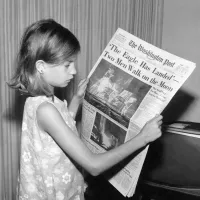
News encompasses information about current events disseminated through various media...
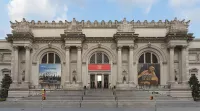
The Metropolitan Museum of Art or the Met is a...

Rikers Island is a -acre prison complex situated on an...

Books are a means of storing information as text or...
Israel located in the Southern Levant region of West Asia...
Trending

4 months ago Bruno Fernandes Confirms Al Hilal Talks, Admits Uncertainty About Man United Future

8 months ago China considers fentanyl offer to US for trade talks, boosting stock market hopes.

9 days ago Tyler Adams aims for historic World Cup run; Pochettino warns USMNT against complacency.
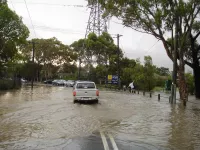
21 days ago Huntington Beach Flooded After Storm; Southern California Experiences Wettest November on Record

2 months ago Travis Scott's Epic Johannesburg Performance: Fans Brave Weather for Unforgettable Show
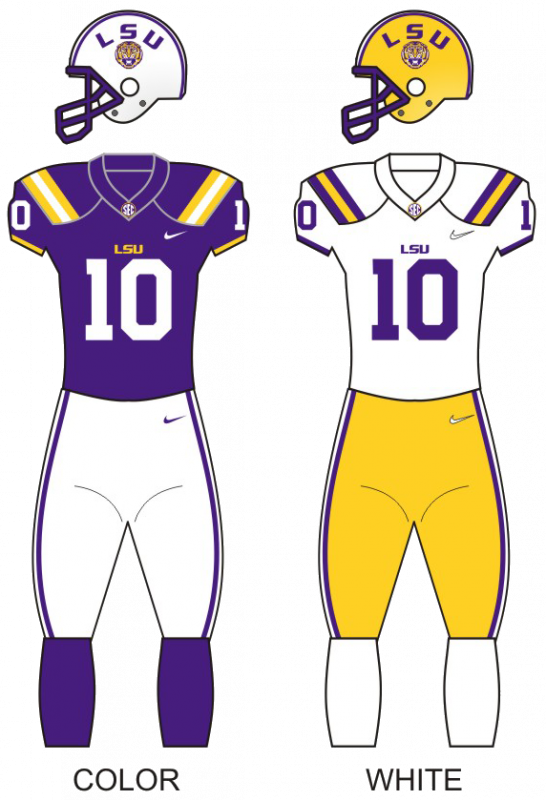
6 months ago Immanuel Iheanacho, a five-star OT, narrows down top schools, including LSU Tigers.
Popular

Candace Owens is an American conservative political commentator and author...

Ilhan Omar is an American politician currently serving as the...

XXXTentacion born Jahseh Dwayne Ricardo Onfroy was a controversial yet...

Oprah Winfrey an American talk show host television producer actress...

Frederick Christ Trump Sr - was an American real estate...

Charles James Charlie Kirk was a prominent American right-wing political...
